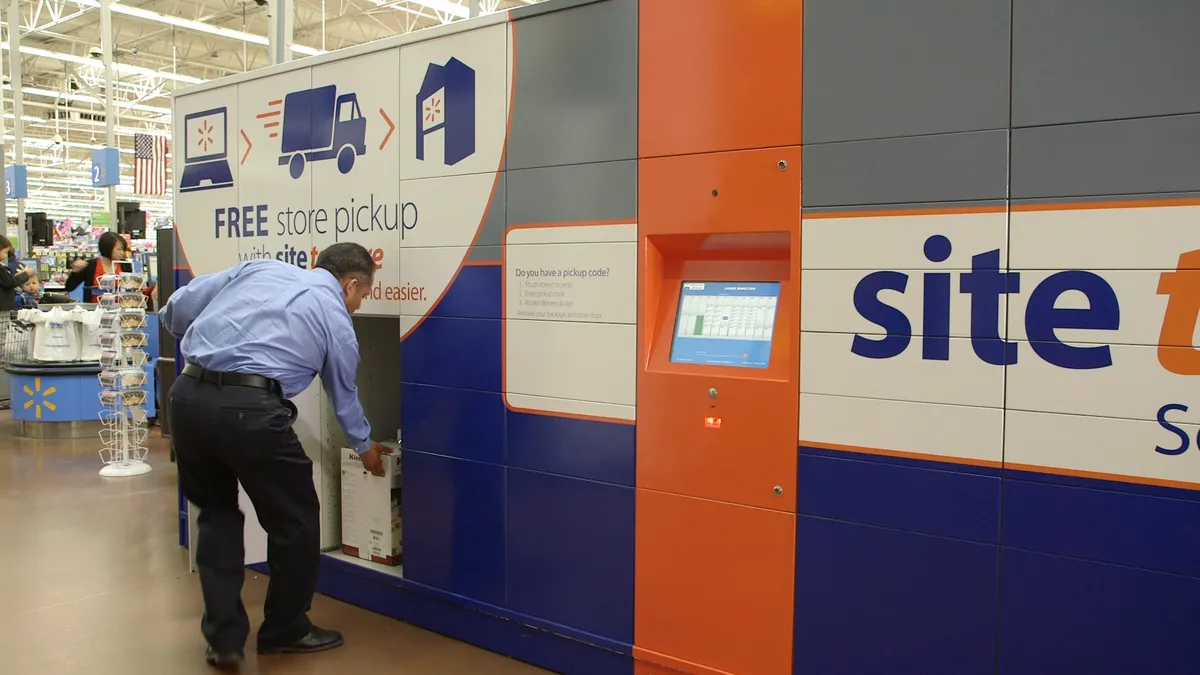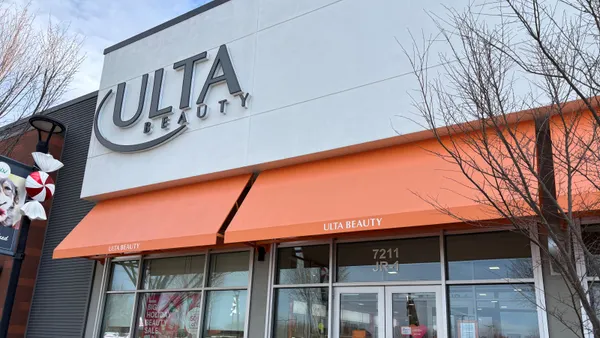Dive Brief:
-
Walmart's experiment with giant pickup kiosks must have been successful, as the company is expanding the program to more stores, a Walmart spokesperson told Retail Dive in an email on Friday: “Based on the response from our customers, we’re adding an additional 100 Pickup Towers to locations across the country."
-
The kiosks were first installed in a store near its Bentonville, AR headquarters late last year, and Walmart has since moved them into 20 more stores nationwide. Shoppers who place in-store pickup orders receive a number for their order and, upon arriving at the store, input the code into Walmart's machine to retrieve their package.
-
The retail giant is working diligently these days to blur the lines between in-store and online shopping, with self-serve grocery pickup kiosks at its fueling stations and discounts for customers picking up online purchases in store.
Dive Insight:
Mark Ibbotson, executive vice president of central operations for Walmart U.S., touted the expansion of the retailer’s grocery pickup and “Pickup Today” services in April, including additional staffing, mobile capabilities and tests of these “Pickup Towers.”
Ibbotson described the Pickup Tower kiosk as “much like a high-tech vending machine” for online orders, allowing pick up of items in less than a minute by scanning a bar code sent to a user’s smartphone. “The pilot phase has been so successful we’re expanding it to other locations across the country,” he said. “We’re also testing other pickup options and locations that quickly get items to you in ways that are most convenient.”
Walmart is taking cues from customer feedback as it beefs up its omnichannel strategy, which in turn is meant to fulfill its commitment to low prices and high convenience. "Our Pickup Towers are the latest example of how we’re using new technology to save our customers time in addition to money," the spokesperson said. "We’re continuing to listen to our customers and will use their feedback to determine the future expansion of the Pickup Tower.”
These initiatives also reflect a departure from Walmart’s core operations strategy, though, which involves super-efficient distribution of consumer goods, based on a massive fleet of stores and customers in charge of getting their purchases from shelves to home. When it comes to pickup via these kiosks, Walmart employees take goods from the shelves to stock the machine, and, with the kiosks so close to the front of the store (and already paid for online), customers are unlikely to pass by other things they may buy on the spot. Meanwhile, they’re paying less for their online orders than those who come into the store to buy the same items.
These assertive actions to move the needle on e-commerce toy with Walmart’s strengths, asserts retail analyst Nick Egelanian, president of retail development consultants SiteWorks International.
“The internet couldn’t possibly be hurting Walmart,” Egelanian told Retail Dive earlier this year. “Go to any Walmart and look at anyone shopping at Walmart and you’ll find very few [Amazon] Prime customers. What Amazon is really good at is promotion and distribution — they can’t make money. Look at the core competencies of Walmart — there’s no catching up to Amazon. There is no way there is a pro forma that could exist on that Walmart campus. There is no path to profit in e-commerce for Walmart as sure as I am sitting here.”












